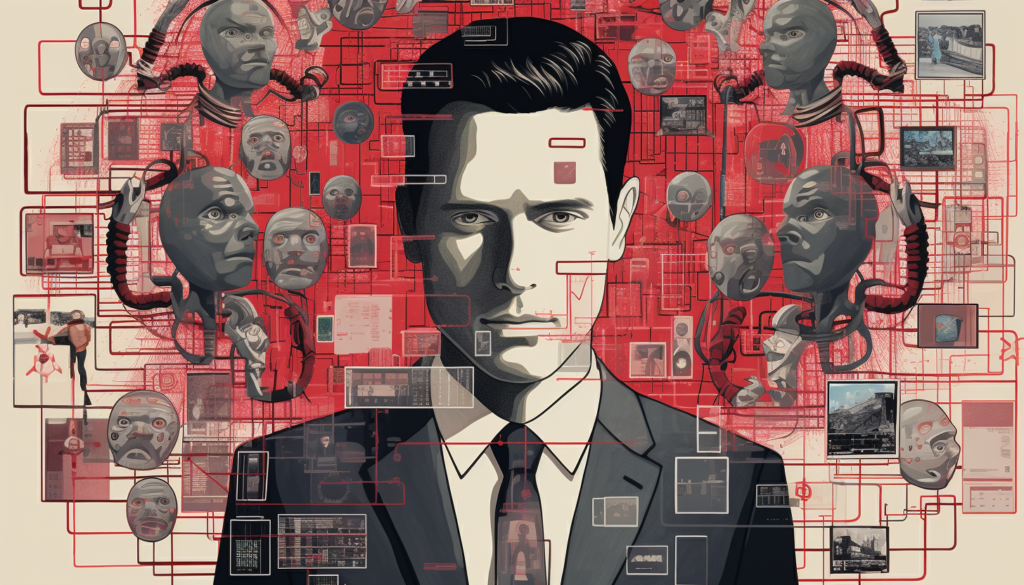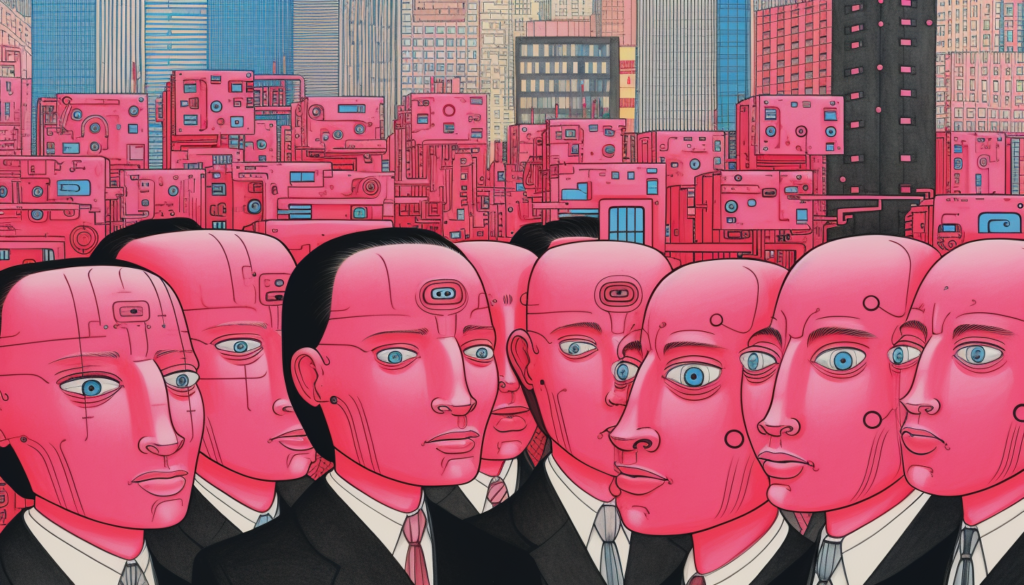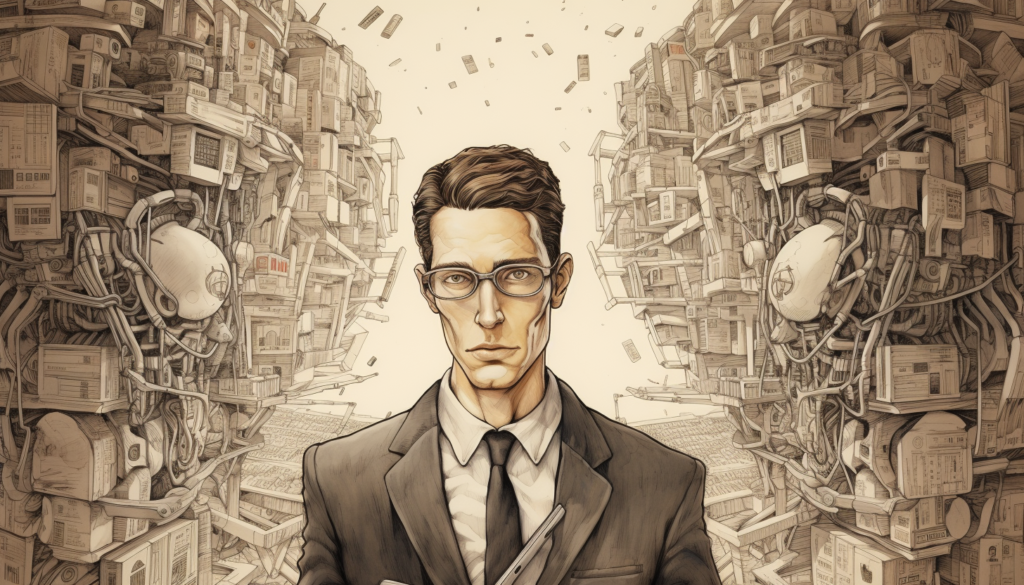Imagine yourself at the forefront of a revolution—a wave of unprecedented change that’s set to transform the landscape of business as we know it. The growing swell behind this revolution is none other than the unnatural force of artificial intelligence (AI). No, this isn’t some science fiction trope—it’s the reality of our world, and it’s reshaping our business practices, strategies, and success stories, day by day.
As leaders and decision-makers, we find ourselves facing a profound question: to dive head-first into the rushing torrent of AI innovation or to wait on the shorelines, watching, analyzing, planning to join the race as ‘fast followers’? Historically, waiting for the technology to mature before jumping in has been a decent strategy. But this time, the dynamics are different. The AI revolution is not just another wave—it’s a tsunami of opportunities that wait for none.
The Innovation Window is Closing

As the pace of our world accelerates, driven by technological advancements and changing consumer behavior, the gap between the proactive and the reactive widens. A passive approach to technological adoption, which might have worked a year ago, is a losing game in the rapidly evolving digital age.
Think of it as a closing window of innovation. Companies that have been nimble and bold, taking the plunge and embracing artificial intelligence in its nascent stages, are already reaping the benefits. They’re experiencing higher productivity, increased efficiency, and game-changing insights. They’re not just playing the game – they’re defining it, setting new standards for competitors to aim for.
Let’s take Pfizer, a name synonymous with cutting-edge pharmaceuticals. They’ve currently got a staggering 150+ AI projects underway. Pfizer didn’t wait around for a guidebook to emerge; they dove into the AI world, getting their hands dirty with the nuts and bolts of the technology. Or consider tech behemoth Alphabet, a firm that had a mind-boggling 2700 AI projects ongoing as far back as 2015. That’s not just keeping pace with progress; that’s being the progress.
On the other hand, companies that choose to be “fast followers” find themselves trapped in a cycle of catch-up. They’re banking on the idea that they can quickly adopt and integrate AI once it matures. But here’s the kicker: AI isn’t a plug-and-play solution that you can simply add to your existing business model and expect miracles. It’s more akin to a deeply embedded, intricate system that needs time, resources, and expertise to tailor to your business needs.
There’s no shortcut to understanding AI. It takes time to gather and interpret substantial amounts of training data, particularly for machine learning. If your AI system is designed to manipulate language through natural language processing, the journey becomes even more complex.
Even once your AI system is developed, integrating it into your existing business processes and IT architecture requires more time, planning, and adaptation. And let’s not forget the challenge of re-engineering business processes to maximize AI’s impact.
So, as the window of innovation narrows, those waiting for a more opportune moment to jump in might find that moment never comes. By the time they’re ready to dive in, early adopters are miles ahead, taking substantial market share. They’re operating at a fraction of the cost and performing better, thus edging out the competition.
In short, AI isn’t a tide that raises all boats equally. It’s a race, and the first off the blocks stand to gain immeasurably. If you’re still contemplating whether to dip your toes into the AI waters, remember: the longer you wait, the harder it’ll be to catch up. And in today’s business world, playing catch-up is a game no one wants to be in.
The question then becomes, are you willing to risk being left behind? Or will you seize the opportunity to innovate, disrupt, and lead in your industry? Your choice today will shape your company’s tomorrow.
The Repercussions of Procrastination

In the boardrooms of today, the same question echoes – can we afford to wait and see with AI? The answer, unequivocally, is a resounding no.
When it comes to the adoption of AI, and in particular generative AI, the market is not forgiving to latecomers. It’s akin to arriving at a bustling party two hours late; the best hors d’oeuvres have been devoured, the finest beverages drained, and the most fascinating conversations are well underway. By the time you catch up, the party has moved on, leaving you with cold pizza and flat soda.
Take the unfortunate tale of some companies that waited out the early stages of digital revolution—Kodak, Blockbuster, Borders—household names that ended up as business school case studies on the perils of missing the technological curve. Their hesitation cost them their market share, and in some instances, their existence.
Generative AI isn’t a passing trend—it’s the cornerstone of the next digital revolution. Already, it’s reshaping sectors, from customer service to marketing to R&D. Ignore it, and you’re in essence turning a blind eye to your future competition.
To wrap it up in a neat little bow – the slow-to-adopt approach isn’t just expensive; it’s dangerous. It’s a risk that businesses, especially in today’s fast-paced, technology-driven economy, cannot afford to take.
Generative AI is not just another item to add to your IT checklist. It’s a paradigm shift. The question is, will you ride the wave, or will you watch from the shore as others gain the experience?
Generative AI: A Breakthrough to Embrace

Have you ever marveled at the ingenuity of a well-crafted keynote, or admired the precision of a marketing campaign that seemed to read your mind? Imagine harnessing that creative prowess, not from an acclaimed speaker or a seasoned marketer, but from an artificial intelligence system. That’s generative AI for you – a revolutionary advancement in technology that’s breaking the barriers of what we believed machines could do.
Not convinced? Let’s embark on a tour of its wonders.
Generative AI, the exemplars of which are the likes of ChatGPT, is not merely an iteration of its AI cousins. It’s an artist, a poet, a composer, all rolled into one. It learns from the data it’s fed, much like a human apprentice, studying the patterns, the structures, and then uses that knowledge to create. What it creates could be as simple as a line of text or as complex as an image, a melody, or a 3D model. This is not your traditional AI that merely mimics human-like responses. This is an AI that can originate, innovate, and surprise.
Let’s delve a little deeper.
Generative AI shines its brightest when it creates content. Whether it’s generating persuasive text, designing eye-catching images, or developing immersive simulations, generative AI is at the forefront of content creation. McKinsey & Company recognize this, stating that these innovative algorithms can “drastically change the way we approach content creation.” Imagine the possibilities – personalized marketing campaigns drafted at scale, news articles penned with machine precision, or customer queries handled with AI charm. The applications are as vast as your vision can reach.
But here’s the kicker – Generative AI isn’t some esoteric technology relegated to tech giants and Fortune 500 companies. It’s already being adopted by savvy enterprises of all sizes, who recognize the value it brings to their operations. Manish Dudharejia, founder and president of E2M, a white-label digital marketing agency, is a proud advocate. From a humble beginning in 2012 with a meager capital, E2M today stands strong with a team of more than 180, with offices in India and the United States. Dudharejia credits a part of his success to the early adoption of technologies like generative AI.
Take a moment to reflect on that. Generative AI isn’t a distant dream – it’s a present reality, altering the dynamics of businesses and industries.
So, here we are, at the crossroads of a technological revolution. Generative AI is no longer an intriguing concept, but a powerful tool that’s waiting to be leveraged. The question isn’t whether your company should adopt generative AI. The question is, can your business afford not to?
The Competitive Edge: Why Waiting is Not an Option

Let’s indulge in a game of chess for a moment. A deft move here, a clever feint there, and the board is yours. But imagine your opponent has already mastered the game, studied the greats, perfected the strategies. You’re yet to even understand the role of the pieces. That’s the reality of a late adopter in the world of AI.
The ‘wait and watch’ approach, often hailed as prudent in the fickle world of tech trends, falls flat when it comes to AI. Because by the time you’re ready to make your move, the frontrunners are already lightyears ahead, leveraging AI for cost efficiency, enhanced performance, and market dominance. A late entry in this race doesn’t secure the silver medal; it risks not placing at all.
But, what does this mean for late adopters?
As the early adopters advance in leaps and bounds, they are reaping the benefits of reduced operational costs, enhanced performance, and increased market share. In stark contrast, the late adopters are still navigating the complex maze of system development, integration, governance, and human interactions with AI. While the frontrunners have established strongholds in the market, the late adopters are striving to catch up.
It’s a race, a compelling one at that, with late adopters battling not only against time but also against the rapidly evolving market dynamics driven by AI pioneers. But here’s the harsh reality – in this digital age, where innovations are propelling businesses forward at an unprecedented speed, the late adopters may never truly catch up. The hesitation to embrace AI is not a pause in progress; it’s a halt.
Now, let’s circle back to our chess game. The pawn, the rook, the queen – they all have a role to play, just like every innovation in technology. But a winning strategy isn’t about waiting for your opponent to make a move. It’s about seizing the opportunity, taking the lead. In the realm of business, AI is the game-changing move, and the time to play it is now.
So, ask yourself again, can you afford to wait?
More Resources on AI

